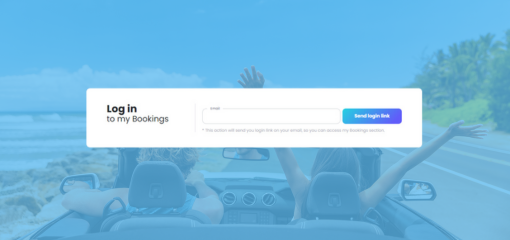Let us be honest. Motion sickness can be very annoying, but fortunately, you can minimise or prevent it. Almost everyone has experienced one of the symptoms of motion sickness, such as dizziness, nausea, vomiting, sweating, etc. But do you regularly struggle with motion sickness? Check out these tips to make your next car journey as comfortable as possible.
Motion sickness occurs because your brain and inner ear do not agree with the movement. Your inner ear - where your balance centre is - is sure you are moving (because you feel the action). However, your brain thinks you are not (because your eyes tell your brain that everything is still). There are many theories about why we react so badly to this conflict. Still, the most common is that your body uses a defence mechanism against neurotoxins.
So the solution to getting rid of motion sickness (or travel sickness) is to make peace with your brain. Here are some simple solutions to do just that.
The simplest do's and don'ts to prevent carsickness and motion sickness.
Task #1: Focus on the horizon
As we said, carsickness occurs because your inner ear and brain are fighting. To get your brain and inner ear in sync, focus on an object outside the car. Do not stare at the dashboard, but look at the road and the buildings in the distance.
Measure #2: Sit in the front seat.
Do this whenever possible. And why? It makes it easier for you to focus on a fixed point. Sitting in the front seat will also help you resist the temptation to look out the side window, which often causes nausea.
Action #3: You take the wheel
If you are driving yourself, focus more on driving than on nausea in the car.

Action #4: Open the window
We probably do not need to stress that fresh and cool air is always a good idea.
Measure #5: Take breaks
Especially on long drives, take frequent breaks. Stretch your legs, breathe deeply and try to relax.
Action #6: Consume ginger
Ginger is proven to help with motion sickness. There are many ways to consume it, from lollipops to tea, lemonade, biscuits or chewing gum. Choose the form that suits you best.
Action #7: Avoid spicy food
Make sure that you eat light before going on a ride. Avoid eating greasy or spicy foods, which can make you feel sick.
Action #8: Stay calm
Try to stay calm and relaxed. If you feel yourself getting tense, it will only make the nausea worse.
Action 9#: Focus on something distant
Focus on something in the distance to help keep your balance.
Basic prohibitions:
Do not eat like there's no tomorrow
Overeating is not a good idea, especially if you have to sit in the car for a few hours. Do not eat greasy, oily or spicy meals and remember to drink plenty of water. Also, avoid excessive alcohol consumption. (I probably do not need to stress that too much alcohol can make you sick, even if you are not sitting in the car).

Stabilise your blood sugar level
Suppose you drink a sweet juice while driving can increase your nausea, as acute hyperglycaemia is related to the gastrointestinal symptoms of motion sickness. When eating on the road, try to stabilise your blood sugar levels and avoid pastries, doughnuts and greasy sandwiches. Instead, opt for oatmeal, wholemeal pasta with vegetables or salad with lean meat, fish or white beans with some rye bread on the side. If you drink coffee, avoid sugar and try adding a little cinnamon.
Do not read or stare at your phone or other electronic devices.
Although you might expect this kind of activity to distract you from motion sickness, it can worsen the situation because you increase the dissonance between your brain and your inner ear. In other words: Focusing on a visual object in the car will make motion sickness worse. The best way to entertain yourself without reading is to listen to audiobooks.
Avoid travelling at night.
Night driving can be more complex because the headlights and streetlights can be disorienting. If you cannot avoid travelling after dark, choose the passenger seat and try to close your eyes or take a nap.
Do not focus on feeling sick.
Do anything you can to distract yourself from nausea. For example, try singing, talking and laughing. Meditate; imagine you are travelling somewhere other than in the car. Stay positive!

Why does motion sickness happen?
There are a few different theories about why motion sickness occurs. Still, the most likely explanation is that it is due to a mismatch between what our eyes see and what our inner ear (vestibular system) feels. Our vestibular system is responsible for our sense of balance and helps us keep our footing when we move around. Our vestibular system detects movement when we're in a moving car, train, or plane. It sends signals to our brain telling us we're moving. However, our eyes don't always detect the same movement, which can cause confusion and lead to that feeling of nausea.
In some cases, such as on a roller coaster, the mismatch between what we see and feel can be pretty significant, so motion sickness is more common on amusement park rides than on trains or cars. Other factors that can increase your risk of getting motion sick include having a migraine, being pregnant, and being very anxious or stressed.










